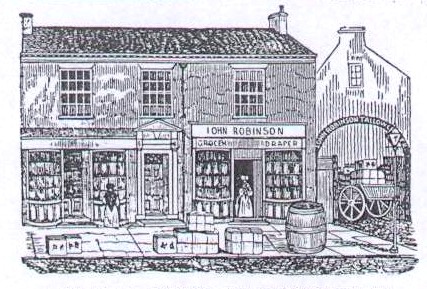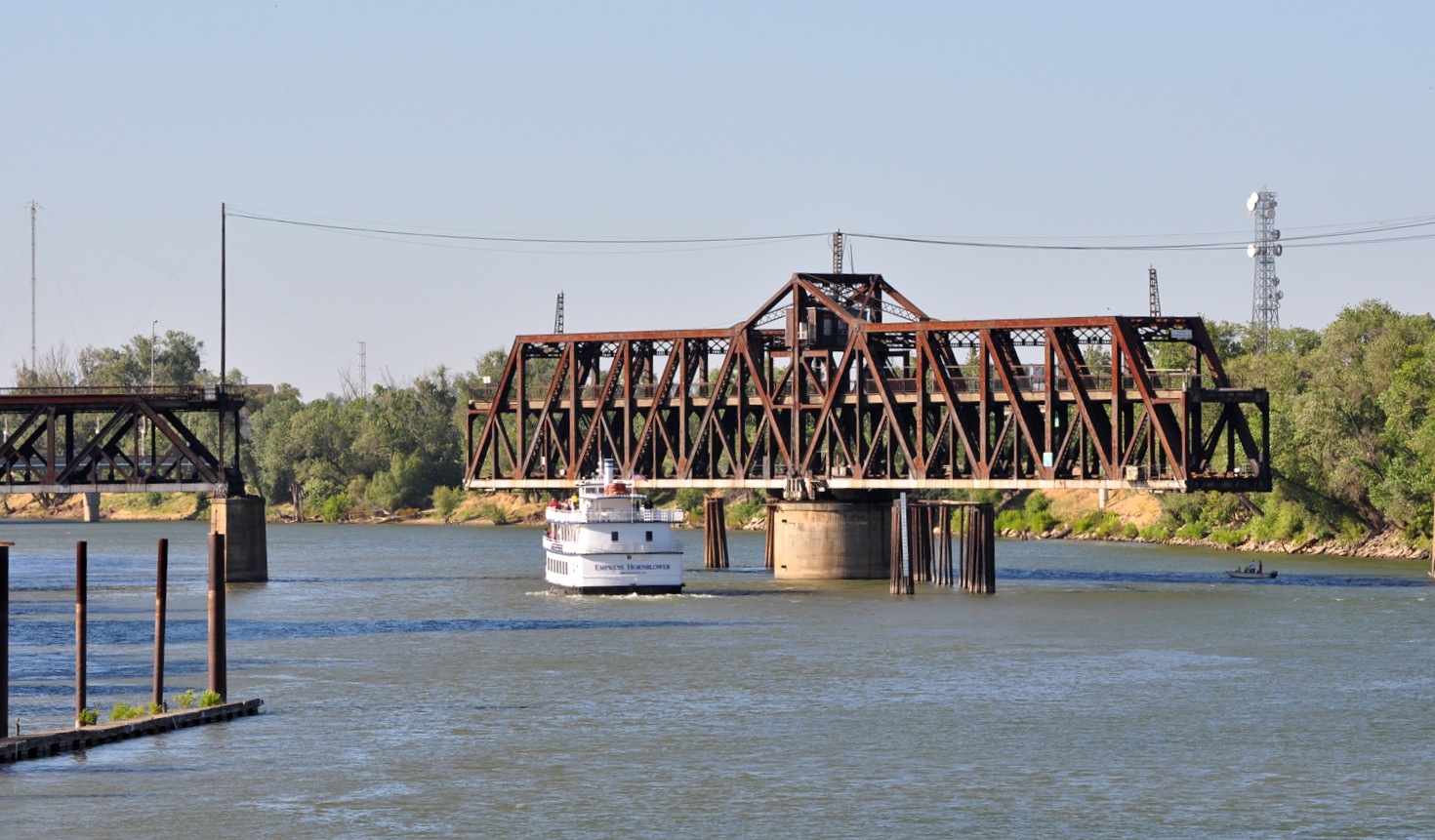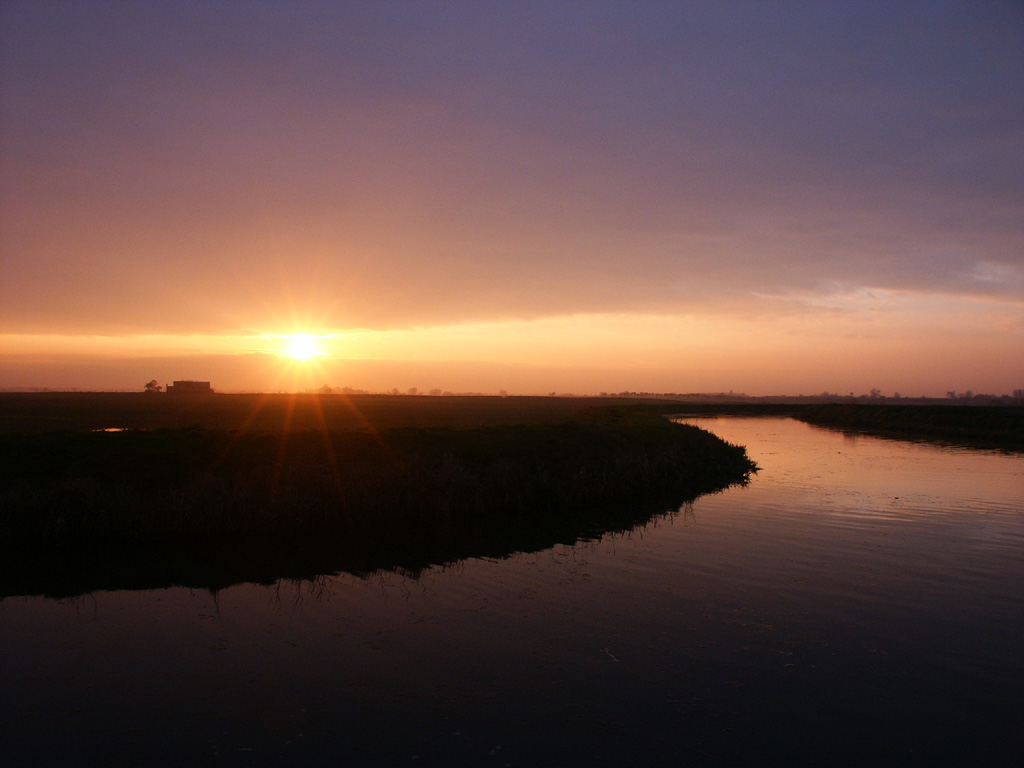|
Brigham, East Riding Of Yorkshire
__NOTOC__ Brigham is a small village in the East Riding of Yorkshire, England. It is situated approximately south-east from Driffield, north of Hull city centre, and to the west of the B1249 road. The village forms part of the civil parish of Foston on the Wolds. Driffield Navigation The Driffield Navigation canal passes at the west of the village. The Brigham section of the Driffield Navigation was dug about 1767. A swing bridge was built across the canal to allow access to Elm Tree Farm, and a footpath to Corpslanding and Hutton Cranswick Hutton Cranswick is a village and civil parish in the East Riding of Yorkshire, England. It is situated approximately south from Driffield town centre, and on the A164 road. The civil parish is formed by the village of Hutton Cranswick an .... In 1967, after a decline in canal traffic, the swing bridge was kept closed, and was replaced by a fixed bridge in the 1970s. In 2003 a new working swing bridge was installed. Brigham po ... [...More Info...] [...Related Items...] OR: [Wikipedia] [Google] [Baidu] |
Foston On The Wolds
Foston on the Wolds is a village and civil parish in the East Riding of Yorkshire, England. It is situated approximately south-west of Bridlington town centre and north of the village of North Frodingham. The civil parish is formed by the villages of Foston on the Wolds and Brigham and the hamlet of Gembling. According to the 2011 UK census, Foston on the Wolds parish had a population of 263, an increase on the 2001 UK census figure of 253. In 1823 Foston inhabitants numbered 300. Occupations included ten farmers, two wheelwrights, two blacksmiths, two grocers who were also drapers, a coal dealer, a corn miller who was also a coal dealer, a boot & shoemaker, a butcher, a tailor, a tanner, and the landlady of the Cross Keys public house. Carriers operated between the village and Hull on Mondays and Thursdays, Driffield and Gembling on Thursdays, and Bridlington on Saturdays. In the village was a Methodist and a Calvinist chapel. The church at the time was dedicated to All S ... [...More Info...] [...Related Items...] OR: [Wikipedia] [Google] [Baidu] |
East Riding Of Yorkshire
The East Riding of Yorkshire, or simply East Riding or East Yorkshire, is a ceremonial county and unitary authority area in the Yorkshire and the Humber region of England. It borders North Yorkshire to the north and west, South Yorkshire to the south-west, and Lincolnshire to the south. The coastal towns of Bridlington, Hornsea and Withernsea are popular with tourists, the town of Howden contains Howden Minster, Market Weighton, Pocklington, Brough, Hedon and Driffield are market towns with markets held throughout the year and Hessle and Goole are important port towns for the county. The port city of Kingston upon Hull is an economic, transport and tourism centre which also receives much sea freight from around the world. The current East Riding of Yorkshire came into existence in 1996 after the abolition of the County of Humberside. The county's administration is in the ancient market town of Beverley. The landscape is mainly rural, consisting of rolling hil ... [...More Info...] [...Related Items...] OR: [Wikipedia] [Google] [Baidu] |
East Yorkshire (UK Parliament Constituency)
East Yorkshire is a county constituency for the House of Commons of the Parliament of the United Kingdom. It elects one Member of Parliament (MP) at least once every five years by the first-past-the-post electoral system. The constituency has been represented by Greg Knight of the Conservative Party since the 2001 general election. History The East Yorkshire constituency was created for the 1997 general election and replaced the Bridlington constituency. The Conservative MP for that seat since 1979, John Townend, won the new seat and held it until he retired at the 2001 general election. His successor, the current incumbent Greg Knight, had previously represented the marginal seat of Derby North from 1983 until he was defeated in the 1997 general election. To date it has been a Conservative safe seat A safe seat is an electoral district (constituency) in a legislative body (e.g. Congress, Parliament, City Council) which is regarded as fully secure, for either a certain ... [...More Info...] [...Related Items...] OR: [Wikipedia] [Google] [Baidu] |
Driffield
Driffield, also known as Great Driffield, is a market town and civil parish in the East Riding of Yorkshire, England. The civil parish is formed by the town of Driffield and the village of Little Driffield. By road, it is north-east of Leeds, north-east of Sheffield, east of York, north of Hull and south-east of Middlesbrough. Driffield is named ''The Capital of the Wolds'', due to its location sitting centrally within the Yorkshire Wolds. According to the 2011 UK census, Driffield parish had a population of 13,080, an increase on the 2001 UK census figure of 11,477. The town was listed in the 2019 Sunday Times report on the Best Places to Live in northern England. History Driffield is of Anglo-Saxon origin, and the name is first attested in the ''Anglo-Saxon Chronicle'' where King Aldfrith of Northumbria died on the 14 December 705. It is also found in ''Domesday Book'' of 1086, meaning "dirty (manured) field". A Bronze Age mound outside Driffield was excavated i ... [...More Info...] [...Related Items...] OR: [Wikipedia] [Google] [Baidu] |
Kingston Upon Hull
Kingston upon Hull, usually abbreviated to Hull, is a port city and unitary authorities of England, unitary authority in the East Riding of Yorkshire, England. It lies upon the River Hull at its confluence with the Humber Estuary, inland from the North Sea and south-east of York, the historic county town. With a population of (), it is the fourth-largest city in the Yorkshire and the Humber region after Leeds, Sheffield and Bradford. The town of Wyke on Hull was founded late in the 12th century by the monks of Meaux Abbey as a port from which to export their wool. Renamed ''Kings-town upon Hull'' in 1299, Hull had been a market town, military supply port, trading centre, fishing and whaling centre and industrial metropolis. Hull was an early theatre of battle in the First English Civil War, English Civil Wars. Its 18th-century Member of Parliament, William Wilberforce, took a prominent part in the abolition of the slave trade in Britain. More than 95% of the city was ... [...More Info...] [...Related Items...] OR: [Wikipedia] [Google] [Baidu] |
B1249 Road
B roads are numbered routes in Great Britain of lesser importance than A roads. See the article Great Britain road numbering scheme The Great Britain road numbering scheme is a numbering scheme used to classify and identify all roads in Great Britain. Each road is given a single letter (which represents the road's category) and a subsequent number (between 1 and 4 digits). ... for the rationale behind the numbers allocated. Zone 1 (3 digits) Zone 1 (4 digits) {{DEFAULTSORT:B Roads In Zone 1 Of The Great Britain Numbering Scheme 1 1 ... [...More Info...] [...Related Items...] OR: [Wikipedia] [Google] [Baidu] |
Civil Parishes In England
In England, a civil parish is a type of Parish (administrative division), administrative parish used for Local government in England, local government. It is a territorial designation which is the lowest tier of local government below districts of England, districts and metropolitan and non-metropolitan counties of England, counties, or their combined form, the Unitary authorities of England, unitary authority. Civil parishes can trace their origin to the ancient system of Parish (Church of England), ecclesiastical parishes, which historically played a role in both secular and religious administration. Civil and religious parishes were formally differentiated in the 19th century and are now entirely separate. Civil parishes in their modern form came into being through the Local Government Act 1894, which established elected Parish councils in England, parish councils to take on the secular functions of the vestry, parish vestry. A civil parish can range in size from a sparsely ... [...More Info...] [...Related Items...] OR: [Wikipedia] [Google] [Baidu] |
Driffield Navigation
The Driffield Navigation is an waterway, through the heart of the Holderness Plain to the market town of Driffield, East Riding of Yorkshire, England. The northern section of it is a canal, and the southern section is part of the River Hull. Construction was authorised in 1767, and it was fully open in 1770. Early use of the navigation was hampered by a small bridge at Hull Bridge, which was maintained by Beverley Corporation. After protracted negotiation, it was finally replaced in 1804, and a new lock was built to improve water levels at the same time. One curious feature of the new works were that they were managed quite separately for many years, with the original navigation called the Old Navigation, and the new works called the New Navigation. They were not fully amalgamated until 1888. The navigation gradually became more profitable, and although railways arrived at Driffield in 1846, the navigation continued to prosper and increase its traffic until the 1870s, after wh ... [...More Info...] [...Related Items...] OR: [Wikipedia] [Google] [Baidu] |
Swing Bridge
A swing bridge (or swing span bridge) is a movable bridge that has as its primary structural support a vertical locating pin and support ring, usually at or near to its center of gravity, about which the swing span (turning span) can then pivot horizontally as shown in the animated illustration to the right. Small swing bridges as found over canals may be pivoted only at one end, opening as would a gate, but require substantial underground structure to support the pivot. In its closed position, a swing bridge carrying a road or railway over a river or canal, for example, allows traffic to cross. When a water vessel needs to pass the bridge, road traffic is stopped (usually by traffic signals and barriers), and then motors rotate the bridge horizontally about its pivot point. The typical swing bridge will rotate approximately 90 degrees, or one-quarter turn; however, a bridge which intersects the navigation channel at an oblique angle may be built to rotate only 45 degrees, o ... [...More Info...] [...Related Items...] OR: [Wikipedia] [Google] [Baidu] |
Hutton Cranswick
Hutton Cranswick is a village and civil parish in the East Riding of Yorkshire, England. It is situated approximately south from Driffield town centre, and on the A164 road. The civil parish is formed by the village of Hutton Cranswick and the hamlets of Rotsea and Sunderlandwick. According to the 2011 UK Census, Hutton Cranswick parish had a population of 2,065, an increase on the 2001 UK Census figure of 2,015. History Hutton Cranswick is listed in the ''Domesday Book''. Within the village is the remnant of a 13th-century monastic moat beside Sheepman Lane, marking the site of a former Cistercian Grange belonging to Meaux Abbey near Beverley. Less than north-west of Hutton are the remnants of Howe Hill Bronze Age round barrow. The diameter mound was excavated in 1892. Flint articles were found, and evidence of previous disturbance of the site, including burnt bones and a food vessel indicating a burial site. The mound later might have been used as a moot hill loca ... [...More Info...] [...Related Items...] OR: [Wikipedia] [Google] [Baidu] |
Snakeholme Lock
Snakeholme Lock is a brick chamber canal lock on the Driffield Navigation, in the East Riding of Yorkshire, England. It is notable in being a staircase lock, but only the upper lock is still used. It was designated Grade II in 1986. Location It is 0.5 mile (0.8 km) south-east from the village of Wansford, and is approximately 17 miles (27 km) north of Kingston upon Hull city centre. Situated on the Driffield Navigation *Next location upstream = Wansford Bridge *Next location downstream = Brigham History Built during the construction of the Driffield Navigation after the Act of Parliament in 1767. It was the first lock reached on the new section of canal, and became the tidal limit on the navigation. A swing bridge reached over the bottom of the lock to allow the Yorkshire Keels to get through without lowering the mast. Once regular trade started to use the new navigation, problems with low water were noticed. The tide on the River Hull does not ea ... [...More Info...] [...Related Items...] OR: [Wikipedia] [Google] [Baidu] |
Fisholme
Fisholme is a small area in the East Riding of Yorkshire, England that is situated between Brigham and Emmotland. The canal section of the Driffield Navigation leaves Frodingham Beck at this point. Location 0.7 miles south-east of Brigham on the Holderness Plain. Situated on the Driffield Navigation *Next point upstream = Brigham *Next point downstream = Emmotland *Next point upstream on Frodingham Beck = Frodingham Landing History There is a moat shown on the OS of the area, and a building called Fisholme Barn used by the Manor Farm, Brigham. See also Driffield Navigation The Driffield Navigation is an waterway, through the heart of the Holderness Plain to the market town of Driffield, East Riding of Yorkshire, England. The northern section of it is a canal, and the southern section is part of the River Hull. C ... Geography of the East Riding of Yorkshire {{EastRiding-geo-stub ... [...More Info...] [...Related Items...] OR: [Wikipedia] [Google] [Baidu] |





